* Rue Cavafy 4, Alexandria
onassis.org hfc-worldwide.org/athens cavafy.onassis.org
4
It was in Alexandria, before 1966 and our relocating to Athens, that I heard for the first time in my father’s house the poems of Constantine Cavafy from the 1935 edition of Takis Kalmouchos—poems that had much to reveal and more to conceal, made with the art of a cosmopolitan.
By fortune’s grace, many years later, as the President of the Onassis Foundation, I proposed to the acquisition of the Cavafy archive, which was passed on as a torch of cultural legacy from the hands of Alekos D. Singopoulo to G. P. Savvidis and finally to his son, Manolis, who entrusted it to us. Already by now, the Cavafy archive has been fully digitized and is available for free to scholars and readers alike.
The next big stop was in November, when the new home of the Cavafy Archive welcomed the research community and the wider public at 16b Frynichou Street; a new landmark was inserted in the Athenian urban fabric as well as a milestone in Cavafian research―only a few months after the “Archive of Desire” festival, organized by the Onassis Foundation in New York, which illuminated aspects of his poetic oeuvre that “converse” directly with our era.
The cosmopolitan journey, full of adventure, full of discovery, continues (yet never ends) in May 2024, where it all began. The Onassis Foundation and I personally feel extremely proud that our sponsorship led to the restoration of the Cavafy House in Alexandria, in collaboration with the Hellenic Foundation for Culture and under the architectural design by the Flux-office of Eva Manidaki and Thanassis Demiris. It is where Cavafy spent most of his life and created dozens of works in constant dialogue with history. Hence, another “dialogue” begins between Athens and Alexandria, one that carves a singular path of research and further quest.
With the restoration of the Cavafy House, the Onassis Foundation equally restores a part of the honor our cultural legacy rightly deserves. At the same time, it widens the spectrum of research possibilities around the future of Cavafy’s poetry.
The Cavafy House was never intended nor aspires to be an exact replica of Cavafy's apartment from so many years ago. Whatever memorabilia, personal and decorative objects we have rescued are, moreover, safely stored in the Cavafy Archive in Athens. In Alexandria, we tried to provide just a glimpse of the Poet’s existence, a sense of his life and the space he inhabited. So, in Alexandria, we have the place where Cavafy lived, and in Athens, the things he lived with. This was the instruction we gave to the architects who undertook the project in both cities.
Finally, the Onassis Foundation would like to thank the Hellenic Foundation for Culture and especially its President, Mr. Koukis, for the favorable acceptance of our proposal and for the excellent cooperation. The impetus for this project was given by the Minister of Culture, Mrs. Lina Mendoni, who, as a supervising authority, supported and helped our proposal become a reality. Finally, thanks are due to Flux-office of Eva Manidaki and Thanassis Demiris for the architectural design that gave flesh and spirit to our original idea both in Alexandria and in Athens; Mrs. Stavroula Spanoudi, Director of the Alexandria Branch of the Hellenic Foundation for Culture; and Michael Biskos, who undertook the project in Alexandria.
Anthony S. Papadimitriou President of the Onassis Foundation
5
6
For the Hellenic Foundation for Culture, the inauguration of the Cavafy House in Alexandria—a demanding project by its nature and one entirely taken under the wings of the Onassis Foundation for its realization—is an event of utmost significance. A landmark of Hellenism beyond the Greek borders and the house where the great Alexandrian poet lived a large part of his life is finally being delivered to the general public, fully restored and with great care given in every detail by a superb and much-experienced team of collaborators of the Onassis Foundation, who worked diligently and methodically for two years, often having to surpass many and unprecedented from the outset obstacles.
The collaboration between the Hellenic Foundation for Culture and the Onassis Foundation to operate the Cavafy House was a strategic choice. The outcome fully justifies the intentions behind it, as they transfigured into a tangible and comprehensive reality.
To Mr. Papadimitriou, with whom we have had an exceptional and effortless collaboration from the very beginning, I would like to express the Hellenic Foundation for Culture Board of Directors’ gratitude. I am certain that this also marks the fulfillment of a personal pledge for him.
The Hellenic Foundation for Culture administration and all Board members would like to express our sincere joy for this project’s realization during our tenure. The Cavafy House will constitute a life-giving cultural beacon for Greek letters throughout the world. We are handing to all Greeks and Philhellenes a work of singular aesthetic value—indeed, a paradigm work.
Nikos A. Koukis President of the Hellenic Foundation for Culture
7
CAVAFY HOUSE IN ALEXANDRIA
Can you imagine the small office where C. P. Cavafy wrote his poems? The balcony on which he dreamed of tomorrow and reminisced about yesterday? The neighborhood in which he walked through in the center of Alexandria? His apartment on the former Rue Lepsius?
8
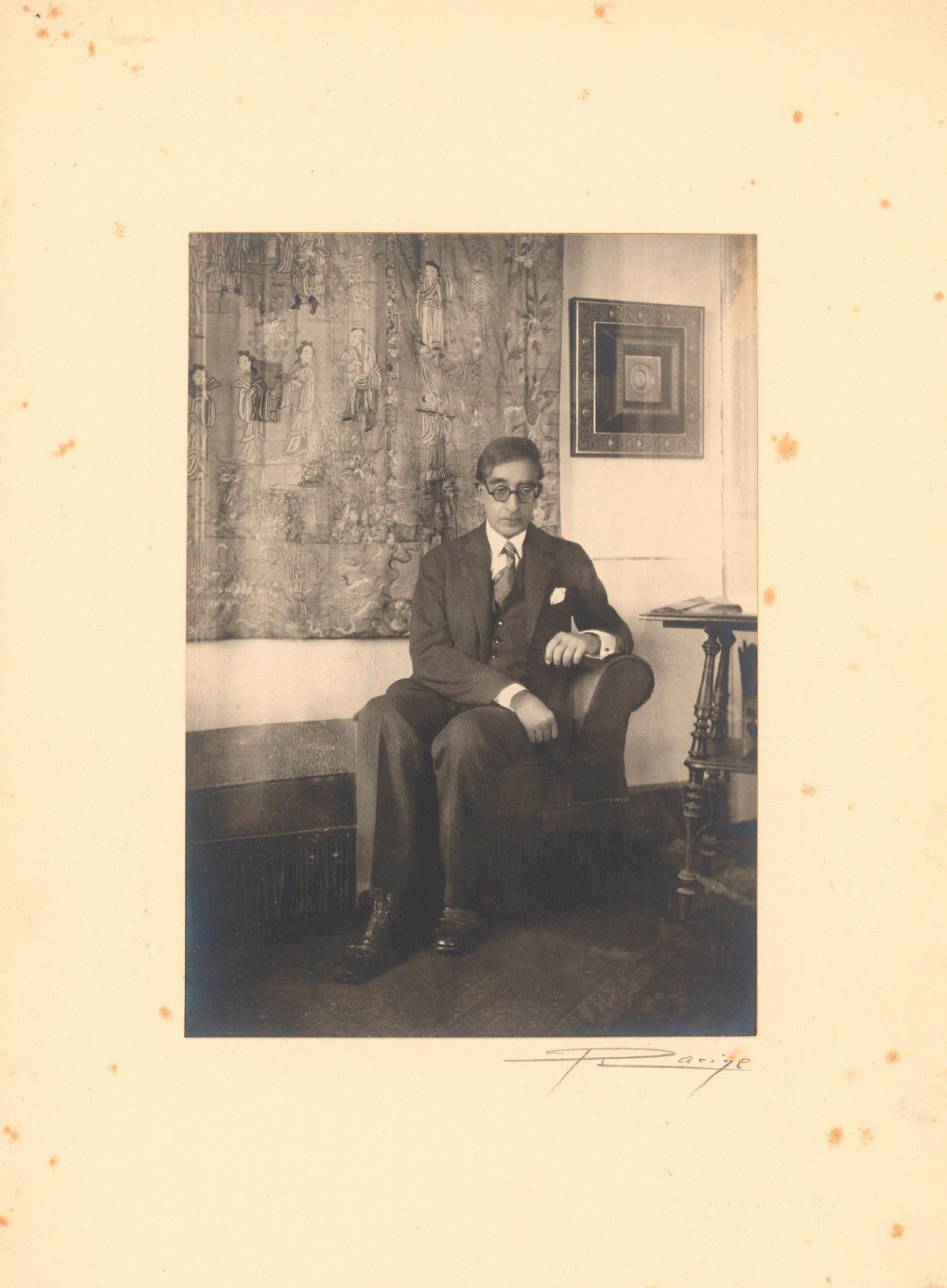
9
Photo of Cavafy at a mature age in his apartment at what was then Rue Lepsius (now Rue C. P. Cavafy), on paperboard with the logo of the photographer (“Racine, studio suisse”).

10
View of the interior of Cavafy's apartment on Rue Lepsius.
Starting with the acquisition of the Cavafy archive, its digitization, and opening it to the public and researchers, the Onassis Foundation undertook the restoration of the Cavafy House in early 2022. One year later, the Cavafy House opened its doors to the public. Under the architectural design of Flux-office by Eva Manidaki and Thanassis Demiris, the place where C. P. Cavafy lived most of his life and created so many of the works that made him a universal poet has been restored and reconfigured in order to highlight the image of the residence as it was in the years the poet lived, to illuminate his relationship with the city of Alexandria and the impact of his work to this day, but also to transport us back in time. Images of his biography take shape in an apartment in the center of Alexandria.
C. P. Cavafy moved to this apartment at what was then 10 Rue Lepsius (now 4 Rue C. P. Cavafy, formerly Rue Sharm El Shiekh) in 1907, together with his older brother Paul. The following year, Paul retired and moved permanently to France, to the town of Hyères, and from then on, the poet lived here alone. After his death, the building functioned as a boarding house named Amir, among other uses.
On November 16, 1992, on the initiative of the historian and writer Kostis Moskoff, cultural attaché at the Greek Embassy in Cairo, the Cavafy Museum was inaugurated in this space. From 1994 to 2020, the Cavafy Museum also hosted the Stratis Tsirkas Room, which was dedicated to the acclaimed Egyptian Greek novelist. A young Tsirkas met C. P. Cavafy and visited him in this apartment during the summer of 1930. Many years later, he wrote two landmark works on the poet, Cavafy and his Era (1958) and The Political Cavafy (1971). In 2022, the Onassis Foundation undertook the restoration of the Cavafy House in collaboration with the Hellenic Foundation for Culture, with the aim of attracting visitors from all over the world.
11

12
Views of the interior of Cavafy's apartment on Rue Lepsius.

13
THEMATIC SECTIONS
Genealogy and Personal Life
“Alexandria
14
Still”
Salon, a Recreation
Cavafy Now
The Global Poet In Dialogue
The Archive
15
The House
Global and always relevant, C. P. Cavafy is by now one of the most translated Greek poets of his era. The impact of the Alexandrian poet's work is demonstrated through a translation corpus encompassing his poetic and prose work and extending into more than thirty languages. The journey into the translation world of C. P. Cavafy begins with the first collected edition of his poems, which was published after his death in 1935, edited by Rica Singopoulo and illustrated by Takis Kalmouchos. This is copy 210 of 2,030 in total on Madagascar Lafuma Vélin paper.
“Alexandria Still”
Throughout his life, C. P. Cavafy conversed with Alexandria. The poet's relationship with the city is illuminated through twenty-one landmarks related to his life and work placed on a reconstructed map of the 1920s. Some of these—like traces of the poet's presence in the city—continue to exist in its urban landscape. At the same time, the life and work of C. P. Cavafy are presented through a timeline that outlines the historical context in which the man and the poet were shaped as he lived and dreamed of Alexandria.
Genealogy and Personal Life
The lineage of the poet was a subject that concerned him greatly, as evidenced by the archival documents “Genealogical Gossip or Various Bits of the History of Our Father's and Mother's Family Thrown Together” and “Genealogical Tableau of the Cavafy Family.” The passports of his parents, Hariclia and Peter John, are indeed an indisputable testament to the family's cosmopolitan and hybrid social identity: a combination of Phanariot origins, multinational business ventures, and Anglo-Greek cultural orientation. The poet's personal life unfolds through a selection of archival documents, including diary entries, letter correspondence, ephemera, professional documents, and books from his library.
Salon, a Recreation
A recreation of the poet's living room, where C. P. Cavafy welcomed his guests, such as Nikos Kazantzakis, Myrtiotissa, Kostas Ouranis, Filippo Tommaso Marinetti, and E. M. Forster. Some of the furniture in the space is a replica of those originally owned by the poet, while other objects have been maintained from the original furnishings of the Cavafy House when it was inaugurated in 1992 under the initiative of Kostis Moskov. A selection of books relevant to those preserved in the poet's library can be found on the shelves.
16
The Global Poet
How does the poet converse with contemporary visual and film artists? How are the work, the figure of the poet, and the Cavafian environment of Alexandria portrayed? A series of eight video works, commissioned by the Onassis Foundation in the framework of the “Archive of Desire” festival in New York in the spring of 2023, are presented in the space of the Cavafy House. Among them are works by great visual artists such as Yannis Kyriakides and Farida El Gazzar.
In Dialogue
The walls of the room are endowed with a selection of archival documents of correspondence between C. P. Cavafy and his contemporaries, as well as newspaper clippings, all of them shedding light on the network of contacts, the appreciation of the poet's literary value, and the recognition by his peers from all over the world. In addition, archival documents reveal the poet's stance and identity as a Greek Egyptiot. At the main table, eight works by Greek and foreign writers and artists detail the reception and enduring impact of the Cavafian work as it materializes in the works of others.
The Archive
C. P. Cavafy compiled and archived his work on a systematic basis, hence creating a unique literary and personal archive. The Cavafy archive includes manuscripts of his poems, hand-compiled printed editions, prose literary texts, articles, studies, and notes by the poet, as well as extensive letter correspondence, texts, and photographs. The Cavafy archive came under the management of the Onassis Foundation at the end of 2012, a development that safeguarded its preservation in Greece while preventing its potential fragmentation. Following its digitization and full documentation, the digital collection of the Cavafy archive was published in March 2019 in Greek and English, rendering the archive accessible to all. In November 2023, the Onassis Foundation secured a permanent space for the Cavafy Archive at 16b Frynichou Street in the area of Plaka, open to the public and researchers alike.
The House
A selection of snapshots from the history of the apartment where the poet lived from 1907 to the end of his life, as it has been shaped from 1933 to the present day. The space of the apartment is revealed as an exhibit in need of preservation and restoration, an initiative that the Onassis Foundation has undertaken in collaboration with the Hellenic Foundation for Culture. In the spring of 2024, the restored Cavafy House will open its doors to the public anew.
17
Now
Cavafy


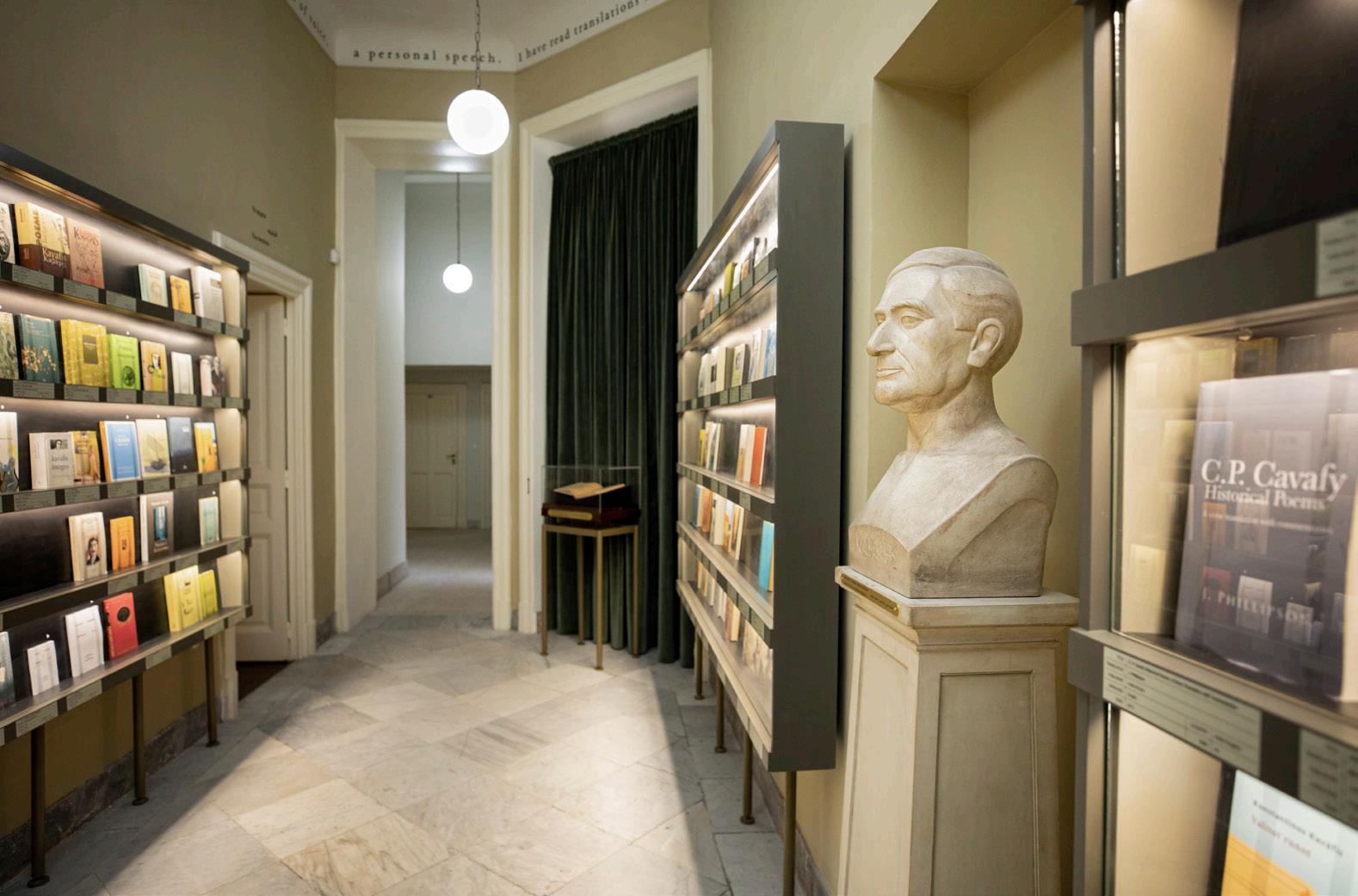


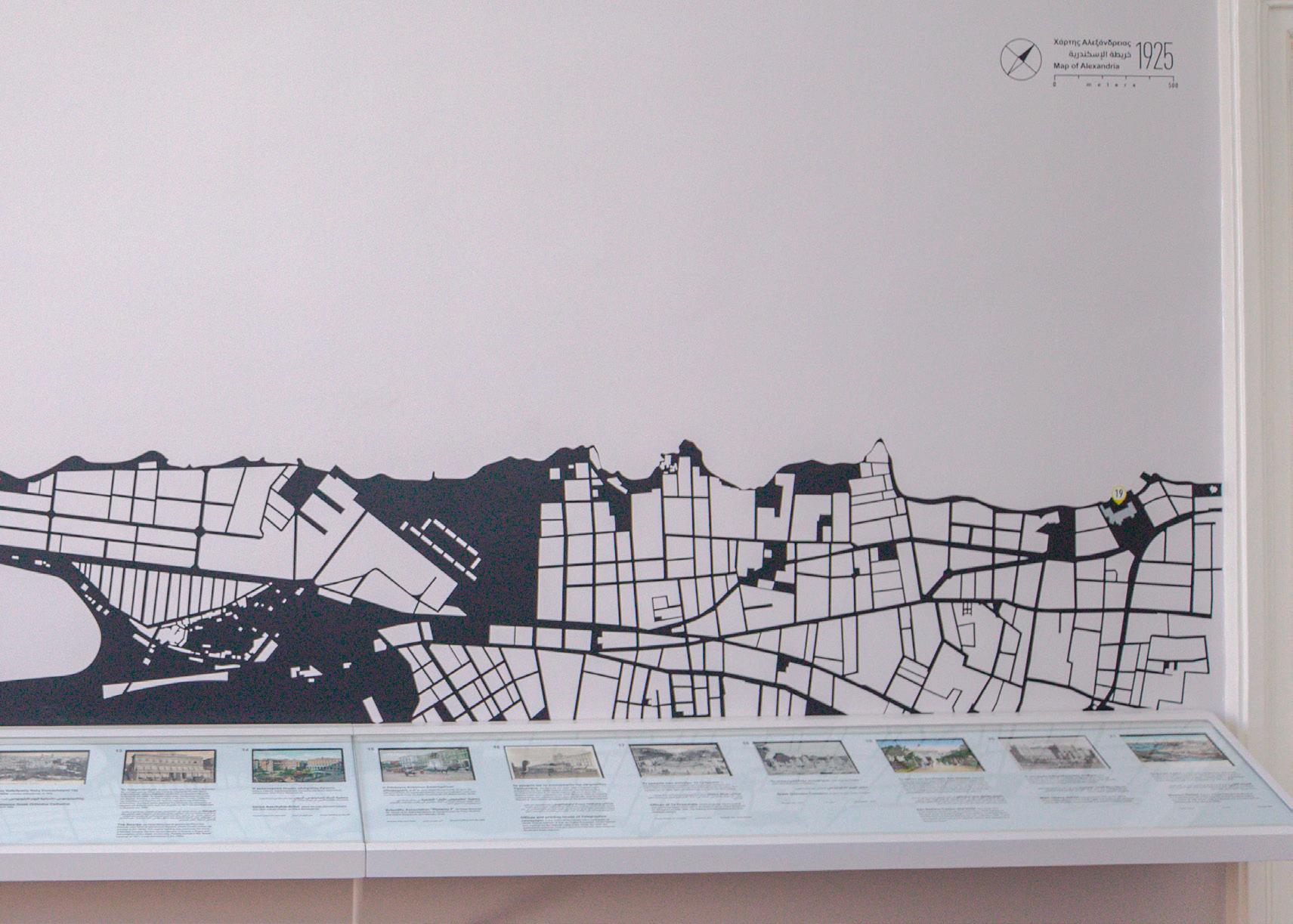




C. P. CAVAFY

26
Photographic portrait of Cavafy at a mature age, in two copies pasted on paperboard and covered in rice paper with the logo of the photographer (“Racine, studio suisse”).
Constantine Cavafy was born in Alexandria, Egypt, on April 17, 1863. When the new calendar came into effect, the date changed to April 29, which coincides with the date of his death (April 29, 1933). The poet’s parents, Peter John Cavafy and Hariclia, had a total of nine children, of whom Constantine was the last. Peter John and his brother George, who had settled in London, managed a flourishing trading company.
The family’s prosperity was to be short-lived. Peter John’s premature death in 1870 forced Hariclia to seek support for herself and her children from her husband’s brother in England. The family resided first in Liverpool and then in London. In 1877, they returned to Alexandria.
1882 saw a nationalist uprising by the army in Egypt; following violent incidents in Alexandria, Britain bombarded the city, and foreign residents began to flee. This time, Hariclia hurried to her family home in Constantinople. In 1885, the family returned to Alexandria, and Constantine assumed various jobs. He obtained steady employment in 1892 when he was hired by the Third Circle of Irrigation, where he worked for the next 30 years. Having moved into what was then 10 Rue Lepsius, now 4 Rue Cavafy, with his brother Paul in 1907, he lived alone in this apartment from 1908 until the end of his life.
In 1901, he visited Athens for the first time, in the company of his brother Alexander. Cavafy went on to exchange letters with intellectual Grigorios Xenopoulos, who in 1903 wrote the first extensive piece about Cavafy’s work to be published in Athens.
Cavafy’s apartment would become his customary place for meeting with visitors coming from Greece and elsewhere, including Nikos Kazantzakis, Myrtiotissa, Kostas Ouranis, Filippo Tommaso Marinetti, and E. M. Forster. His unusual publication method, certain personal idiosyncrasies (as described by his associates), and his pointed references to literary figures led to the creation of an aura of legend around his person.
27


Cavafy’s Greek passport for the year 1932.
28
1886 saw Cavafy’s first publications: the prose piece “Coral from a Mythological Perspective” in the newspaper Konstantinoupolis and the poem “Bacchic” in the journal Esperos in Leipzig.
The first appearance of Cavafy’s idiosyncratic editorial method can be dated to 1892, when he printed a broadside containing the poem “Builders.” In subsequent years, he collected offprints of poems that had appeared in various journals―or had individual poems printed―and used them to form handmade packets, which scholars retrospectively described as two “volumes” (1904 and 1910) and ten “collections,” containing poems from the years 1910–1932. These quasi-books never circulated commercially; rather, the poet himself sent or gave them to friends and admirers of his work. G. P. Savvidis later grouped his entire poetic production into four categories: the 154 poems of the “canon,” comprising the poems Cavafy himself put into circulation; the “repudiated” poems of his early period; the “hidden” poems, which were not published during Cavafy’s lifetime; and the “unfinished,” drafts of poems which he never completed.
By the 1920s, many young readers in Athens had turned their attention to Cavafy’s poetry; some wrote to ask for collections or composed commentaries on his work. In 1926, the Greek government awarded him the Order of the Phoenix, the only distinction he received during his lifetime. The same year, a new artistic and literary journal, Alexandrini Techni, appeared in Alexandria, which Cavafy not only directed from behind the scenes but supported financially.
In 1932, he was diagnosed with throat cancer and was encouraged by his doctors to travel to Athens for further treatment. He was accompanied on the journey by his heirs, Alekos and Rika Singopoulo. His presence in the Greek capital met with great publicity in the Athenian press. He was treated at the Hellenic Red Cross Hospital and underwent a tracheotomy, which caused him a permanent loss of his ability to speak.
In April 1933, he was admitted to the Greek Hospital of Alexandria, where he breathed his last on April 29.
29
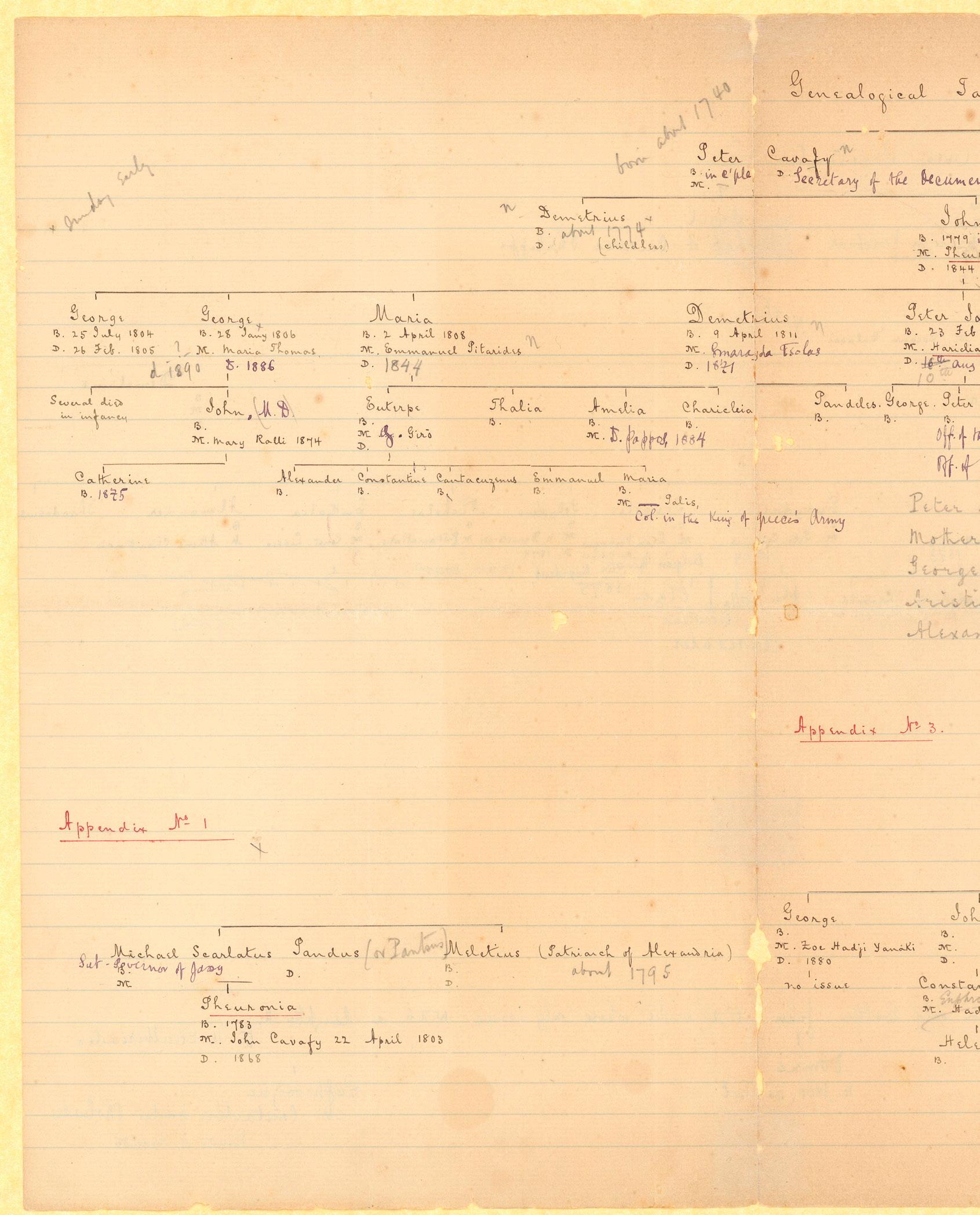
"Genealogical Tableau of the Cavafy Family," compiled by John Cavafy between 1883 and 1905.
30
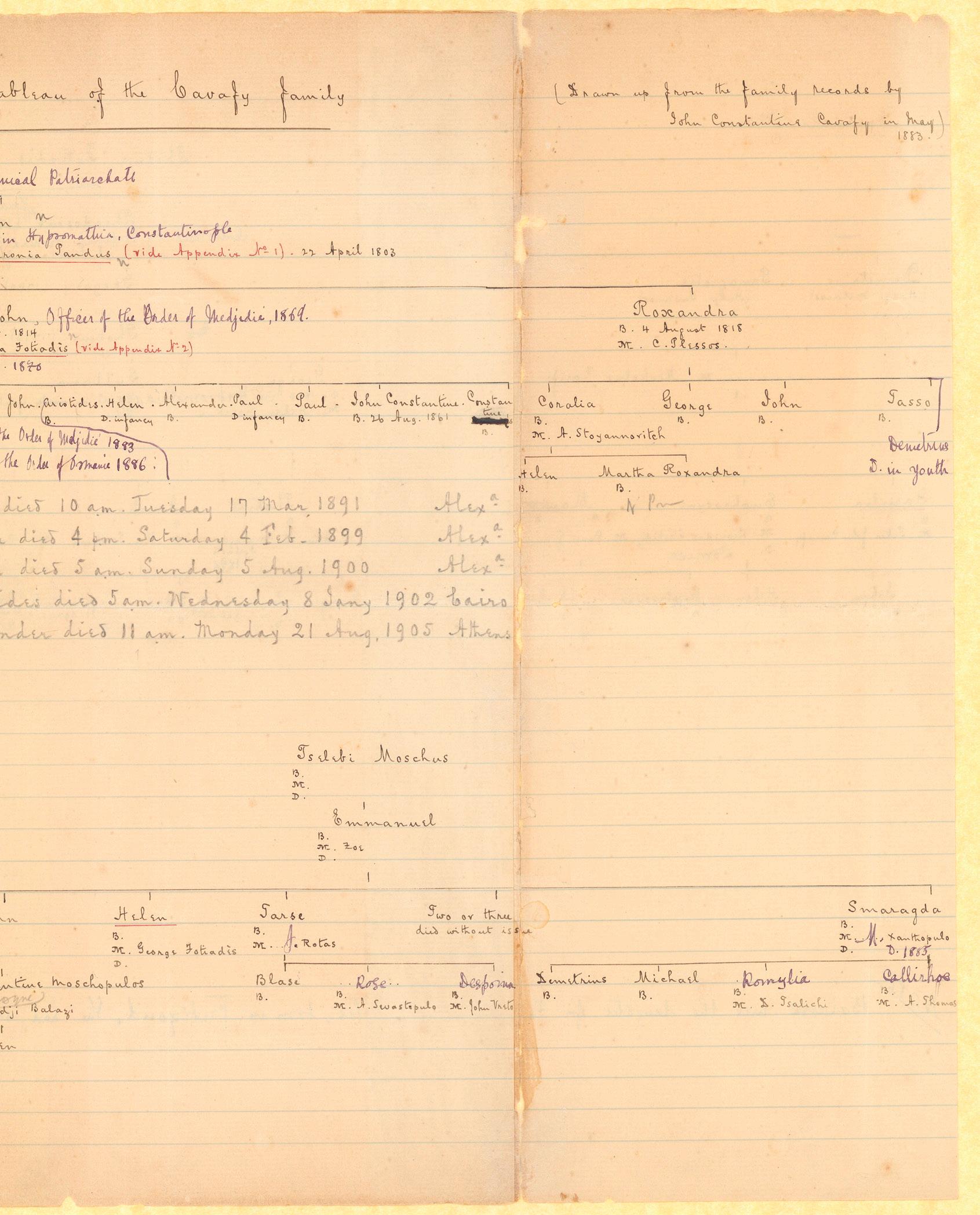
31

Handwritten note on the poem “The God Abandons Antony”.
32

The Greek text of the poem “The God Abandons Antony” on a page cut off from the journal Grammata
33
CAVAFY ARCHIVE

34
The new premises of the Cavafy Archive on 16B Frynichou Street, in the area of Plaka, Athens.
Timelessly contemporary, political, sensual, and profound, but always relevant, the internationally acclaimed poet C. P. Cavafy compiled and archived his work on a systematic basis, hence creating a unique literary and personal archive. The Cavafy archive consists of more than 2,000 items, including manuscripts of poems, hand-compiled printed editions, prose literary works, articles, studies, and notes by the poet, along with his personal archive rich in correspondence, texts, and photographs.
The Onassis Foundation acquired the Cavafy archive at the end of 2012. This acquisition safeguarded its preservation in Greece and prevented its potential fragmentation. The aim of the Onassis Foundation is to ensure openness and free access to the archive by the public and researchers, as well as to disseminate the universal nature of Cavafy’s poetry.
The Onassis Foundation proceeded with digitizing, classifying, and fully documenting the entity of the Cavafy archive contents in Greek and English, and in May 2019, the digital collection of the archive was published at cavafy.onassis.org, rendering it accessible to all. Responding once again to the need for openness, accessibility, and dissemination of the poet’s work, the Onassis Foundation invested in the creation of the Cavafy Archive, a tailor-made space in Athens dedicated to the poet’s archive, which was inaugurated in November 2023. Yet another international cultural heritage attraction opened for all residents, researchers, and visitors under the architectural design of Flux-office by Eva Manidaki and Thanassis Demiris.
The Cavafy Archive in the historical center of Athens hosts the poet’s literary and personal archive, 966 books from his library, and a collection of documents and works of art with references to Cavafy. The aim was to create a space for the poet’s writings and books, his personal items and furniture, surrounded by artworks that enable us to gain an in-depth understanding of his growing impact on world literature and art from his era until today―a space open to researchers and the public, open to all.
35
ONASSIS FOUNDATION
36
onassis.org
The mission of the Onassis Foundation, founded by Aristotle Onassis in 1975, will always be human-centric: to create the conditions, explore the ideas, and spark the discussions that lead to a better society.
The Foundation actively promotes the rich contributions of contemporary Greek culture throughout the world. Although based in Athens, its work spans the globe, focusing on culture, healthcare, and education.
It has awarded more than 7,600 scholarships to young people worldwide since the late 1970s and presents countless cultural events each year. By building the Onassis National Transplant Center until 2024, following the Onassis Cardiac Center in Athens, it creates the conditions to provide health to all, offering the Greek society a hospital for the transplant of solid organs, as well as a center for research and innovation in the field of organ transplantation.
In the US, the Onassis Foundation offers generous support for and curation of cultural programming across various art forms and creative endeavors. Onassis USA, based in New York, includes Onassis ONX (ONassis eXtended realities), a global Onassis Culture platform dedicated to new media art and digital culture. The program provides holistic support from the spark of an idea to meticulous development, polished production, and impactful distribution and communication. Onassis ONX collaborates with organizations such as NEW INC, Rhizome, Pioneer Works, NYU Tandon School of Engineering, and Games 4 Change in New York and with IDFA, CPH:DOX, DiMoDA, and PHI Centre globally.
Through Onassis AiR, a program built on the continuous support of artistic research and practice, aiming to foster a space where the artists set the conditions themselves for the development of their work, the Onassis Foundation supports the members of its broader ecosystem and its existing partnerships with the local and international artistic community.
And when it comes to culture, itʼs not just art; it’s a way of living. At Onassis Culture, with the Onassis Stegi as its hub, the Foundation encourages the talent and energy of local and international artists to thrive and starts conversations that aim to shake and shape society. Onassis Stegi is a center of global contemporary culture that, through a series of initiatives and works, promotes dialogue about democracy, social and environmental justice, racial and gender equality, and LGBTQIA+ rights.
STEGI.RADIO is Onassis Stegiʼs international web radio, thus a cultural platform that focuses on new music productions, speaks through sounds and ideas, tracks current political and critical thought, and crosses an imaginary archipelago to bolster dialogue that goes beyond borders and dates.
The Onassis YouTube Channel is constantly evolving and growing bigger by adding new productions, digital concerts, documentaries, online discussions, and unique content, bringing our common digital future into focus.
37
HELLENIC FOUNDATION FOR CULTURE
38
hfc-worldwide.org/athens
The Hellenic Foundation for Culture (HFC) was established in 1992 with a unanimous decision of the Greek Parliament. It is located in the house of the late Greek businessman Prodromos Bodossakis. Its primary aim is the dissemination of the Greek language and culture around the world. By planning the organization of cultural events, the promotion of Greek books, theater, music, and the arts, the dissemination of Greek cinema, and the teaching of the Greek language at the core of its action, the Hellenic Foundation for Culture has proven that it possesses the necessary knowledge, experience, prestige, and vision to promote the Greek culture both in Greece and internationally. To this end, the HFC has established a network outside Greece, which includes branches in Alexandria, Belgrade, Berlin, Bucharest, Moscow, Odessa, and Trieste. The HFC is a member of two important European cultural networks: the European Union National Institutes for Culture (EUNIC) and the Anna Lindh Foundation. It cooperates with university departments of Greek Studies, Greek language schools, embassies, cultural centers, museums, and libraries all over the world.
39
ONASSIS FOUNDATION
BOARD OF DIRECTORS
Anthony S. Papadimitriou President of the Board
Costas Grammenos Vice-President of the Board
Dennis Μ. Houston Vice-President of the Board
Florian Marxer Vice-President of the Board
Stefanos P. Tamvakis Member of the Board
Michael-Spyros Sotirhos Member of the Board
Simon Critchley Member of the Board
Karen Brooks Hopkins Member of the Board
Paul Holdengräber Member of the Board
Nikolaos Karamouzis Member of the Board
Panayotis Touliatos Member of the Board
Mary Κaragianni-Μichalopoulou Member of the Board
Eleni Panagiotarea Member of the Board
Konstantinos Bikas Member of the Board
40
ONASSIS CULTURE
Panagiotakou
Director of Culture
Dimitris Theodoropoulos Deputy Director of Culture
ONASSIS CAVAFY ARCHIVE
Effie Tsiotsiou
Executive Director & Director of Education
Marianna Christofi
Project Development Manager
Angeliki Mousiou Cavafy Archive Researcher
Eleanna Semitelou
Projects Coordinator
41
Αfroditi
HELLENIC FOUNDATION FOR CULTURE EXECUTIVE BOARD
Nikos A. Koukis President of the Board
Andreas Sideris Vice-President of the Board
Ilias Polymenidis Board Treasurer
Phoibos Georgios Angeletos Member of the Board
Maria Efthymiou Member of the Board
Georgios Kaloudis Member of the Board
Louisa Karapidaki Member of the Board
Alexandros Mallias Member of the Board
Andreas Markantonatos Member of the Board
Charalambos Meletiadis Member of the Board
Ioannis Polychronopoulos Member of the Board
Dionysios Tselentis Member of the Board
Fani Chatziathanasiadou Member of the Board
42
43
ACADEMIC ADVISORS FOR THE CAVAFY HOUSE EXHIBITION
Hala Halim
Associate Professor in the Departments of Comparative Literature and Middle Eastern Studies, New York University, USA
Peter Jeffreys
Associate Professor of English, Suffolk University, Boston, USA
Louisa Karapidaki
Museologist, Hellenic Folklore Research Center, Academy of Athens, Greece
Alexander Kazamias
Associate Professor in Politics, Faculty of Arts and Humanities, Coventry University, UK
Gonda Van Steen
Koraes Chair of Modern Greek and Byzantine History, Language and Literature, King’s College London, UK
Mohamed Adel Dessouki
Urban History Advisor, University of Alexandria, Egypt
44
CAVAFY ARCHIVE ACADEMIC
COMMITTEE
Stathis Gourgouris
Professor of Comparative Literature and Society at Columbia University, New York, USA
Maria Boletsi
Endowed Professor of Modern Greek Studies at the University of Amsterdam (Marilena Laskaridis Chair) and Associate Professor in Comparative Literature at Leiden University, The Netherlands
Martha Vassiliadi
Assistant Professor of Philology at the Aristotle University of Thessaloniki, Greece
Bart Soethaert
Principal Investigator at the Cluster of Excellence “Temporal Communities: Doing Literature in a Global Perspective” (EXC 2020) and post-doctoral researcher at Freie Universität Berlin, Germany
Amalia Pappa
Deputy Director General of the General State Archives, Greece
Peter Jeffreys
Associate Professor of English at Suffolk University, Boston, USA
Christina Dounia
Professor Emerita of Modern Greek Literature at the National and Kapodistrian University of Athens, Greece
Takis Kayalis
Professor of Modern Greek Literature at the Hellenic Open University, Greece
Vicente Fernández González
Associate Professor of Translation and Interpreting (Modern Greek) at the University of Malaga, Spain
45
Flux-office:
Eva Manidaki & Thanassis Demiris
Design & Curation
Eleni Arapostathi
Collaborator
Katerina Vlahbey
Graphic Design
Karren Emmerich
English Translations & Editing
Vassilis Douvitsas
Greek Translations & Editing
Khaled Raouf
Arabic Translations
Roni Bou Saba
Arabic Proofreading
Effie Tsiotsiou, Marianna Christofi, Eleanna Semitelou
Project Coordination
CODEP LTD EGYPT
Building Restoration Contractor
Babis Lengas
Reproduction of Archival Items
MOVEART
Hanging of Artworks
Cluster
Bespoke constructions and display units’ production and installation supervision
EXHIBITION CREDITS
PUBLICATION CREDITS
Director
Afroditi Panagiotakou
Advisors
Dimitris Theodoropoulos, Effie Tsiotsiou,
Demetres Drivas, Alexandros Roukoutakis
Art Director
Christos Sarris
Editor
Marianna Christofi
Publication Management
Christina Kosmoglou
Graphic Design
Georgia Leontara, Maria Poyiadji
Coordination
Elisavet Pantazi
Copy Editor
Margarita Grammatikou
Photo credits
Mahmoud Youssef
Translation & Text Editing
Vassilis Douvitsas
Print Management
Yiannis Alexandropoulos
48
49
© 2023 24, Onassis Foundation
onassis.org hfc-worldwide.org/athens cavafy.onassis.org






















